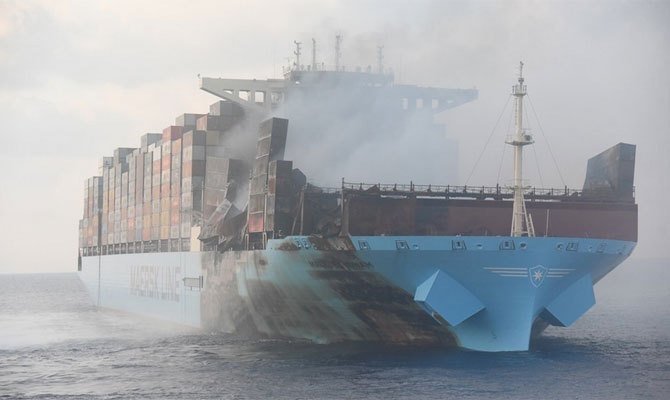Liners rally to impose fines on misdeclared cargoes

Other container lines are taking action similar to Hapag-Lloyd’s decision to impose fines on shippers who have failed to declare hazardous cargoes in their containers.
As reported yesterday, Hapag-Lloyd will hit customers with a $15,000 per box fine for any misdeclared hazardous cargoes it finds. Orient Overseas Container Line (OOCL) has also said it will start issuing penalties, without specifying how punitive they will be.
In Seoul, meanwhile, a spokesperson for HMM, South Korea’s flagship carrier, told Splash today that it has instituted the same $15,000 per box fine effective from this week for non or misdeclaration of dangerous cargoes out of China.
A spokesperson for Hapag-Lloyd welcomed news that other liners were issuing fines to clients, urging for a pan-liner commitment to crack down on the practice that has led to so many boxship fires in recent years.
“Undeclared dangerous goods in containers have always been a challenge for shipping lines, endangering safety and security of the ship and the crew. All industry players together – including customers – need to safeguard that undeclared dangerous goods containers will be a thing of the past. We, as Hapag-Lloyd, very much hope that our implemented fee for non-compliance is a good way of educating customers who willingly do not declare their dangerous goods,” the spokesperson told Splash from Hamburg.
Maersk Line, the world’s largest container shipping company, also revealed it too has implemented similar fines, but is keen to up the industry’s cargo screening capabilities to stamp out the scourge.
“Imposing a misdeclaration fee is one of the many instruments we have to increase safety and avoid misdeclarations and one we are already using,” Niels Gunner Schermer, Maersk’s head of center operations dangerous goods, told Splash today. Schermer went on to say however that fines only served as a “reactive measure”.
“We strongly believe in increasing efforts within cargo screening and knowledge sharing with customers in order to ensure that the cargoes mis- or undeclared are avoided from the outset,” Schermer said.
A number of Splash readers have commended yesterday’s Hapag-Lloyd news, but believe $15,000 is not punitive enough.
Antwerp-based Martyn Benson, whose liner career stretches back to 1979, said the $15,000 fine should be 10 times higher. He also questioned how hard it might be to enforce the fines.
“Imagine there is a dispute about who made the false declaration (trader, shipper, buyer, forwarder, etc) or the exporter says he didn’t know the difference between ‘hexasulphate and hexasulphite’ and then you have an endless questioning of intent,” Benson wrote in a comment left on this site.
Transport insurer TT Club welcomed news of the fines in a release today.
Peregrine Storrs-Fox, TT Club’s risk management director commented, “Clearly, the shipper has primary responsibility to declare fully and honestly so that carriers are able to take appropriate actions to achieve safe transport. Since this is not always the case, carriers have to put in place increasingly sophisticated and costly control mechanisms to know their customers, screen booking information and physically inspect shipments. Equally, carriers have the opportunity to review any barriers to accurate shipment declaration, including minimising any unnecessary restrictions and surcharges. Penalising shippers where deficiencies are found should be applauded. Furthermore, government enforcement agencies are encouraged to take appropriate action under national or international regulations to deter poor practices further.”
According to the Cargo Incident Notification System (CINS), nearly 25% of all serious incidents onboard containerships are attributable to misdeclared cargo.
While the exact breakdown of cargo contents varies by container, it’s well known that at any given time, between 5-10% of an average container ship’s cargo is declared as hazardous goods and approximately 12% of global container trade comprises dangerous goods. However, it’s nearly impossible to know how much dangerous cargo is undeclared, or misdeclared.

Hi Sam. Thank for your timely info on shipping business. It helps us a lot in updating our shipping business on date to day basis. Thank you and please keep it up.
-I would like to discuss this entire issue in more detail, based on +25 years experience in compliance matters & activities as directly related to the transport of DG under IMDG.
My initial reaction is that this specific effort will not result in effective control nor the elimination of the problem and may in fact add to the concealment efforts.
Other elements would include proper and effective training, awareness of the IMO CTU Code for starters as a means to improve compliance.
Norm Loiseau
Orion DG Management Consultants Inc,–
514-995-4270